The Best Employee Management Software
We reviewed the most popular employee management software on the market and selected our favorites for all types of businesses.
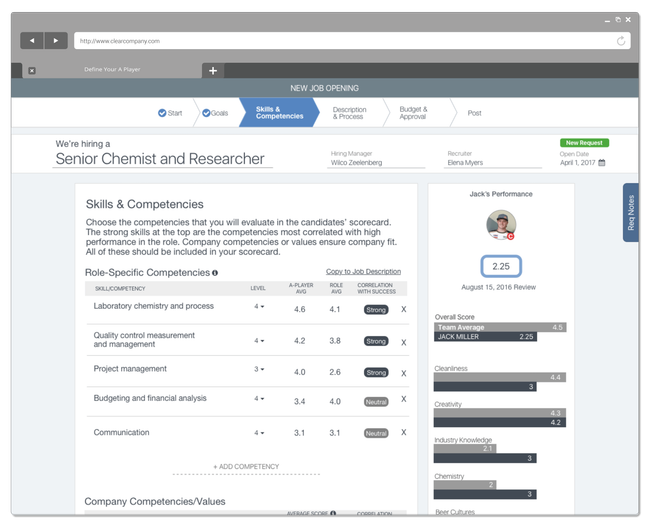
- Customizable platform
- Multiple users have praised customer support
- Software is easy to navigate
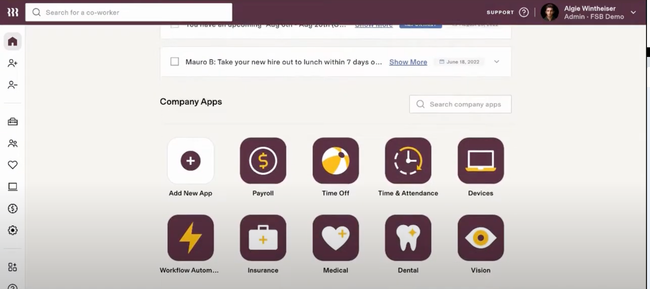
- Is scalable and customizable
- Has many HR, IT, and finance integrations
- Supports multiple countries and ensures compliance with federal workplace regulations
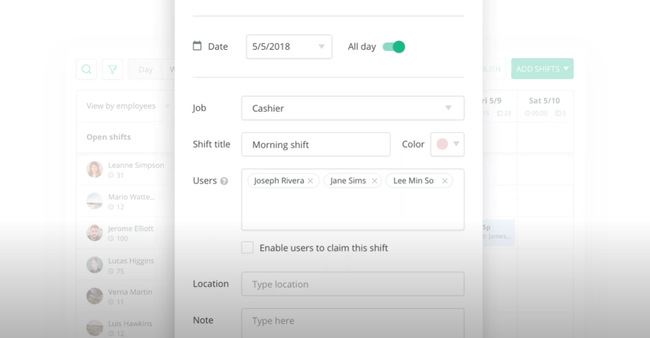
- Integrates with a variety of communication tools
- Offers employee engagement through recognition, rewards, and surveys
- Includes GPS-tracking for remote workers
Employee management software includes tools such as talent management, time and attendance recording, employee analytics, and communication. We used our advanced review methodology to evaluate top solutions for businesses of all sizes.
- ClearCompany: Best Overall
- Rippling: Best for Multi-State & Global Teams
- Connecteam: Best Mobile App
- BambooHR: Best Employee Success Tools
- Paycor: Best Talent Development Feature
- Gusto: Best for Small Businesses
- Lattice: Best Performance Management Options
- Justworks: Best Employee Benefits
- TriNet: Best Time Management
- UKG Ready: Another Good Option
ClearCompany - Best Overall
The survey and feedback engine in ClearCompany serves as the trigger point for almost every management and engagement initiative inside the platform. It starts with your HR team launching either a pre-built or custom questionnaire, whether an eNPS or a DEIB sentiment survey. Mobile-friendly and anonymous, these surveys help staff feel more comfortable sharing actual feedback.
Once the employee submits the survey, ClearCompany’s analytics layer steps in, aggregating results and surfacing insights to reveal what staff feel, where those feelings cluster, and why. For example, you might see rising dissatisfaction in a specific department or waning enthusiasm tied to a new policy. This helps you figure out where to focus improvement efforts without sifting through noise.
ClearCompany then turns surveys into a true feedback loop. When employees raise issues, leaders can turn those into measurable priorities. Managers and staff can set and track goals and revisit alignment as data evolves. One-on-one workspaces provide a structured forum to discuss progress and set new priorities. ClearCompany documents each interaction, storing agendas and action items so top-level insights sync directly with day-to-day conversations.
ClearCompany falls in our high-tier bracket ($20,000-$75,000/year for 100-500 employees) and enterprise pricing tier ($75,000-$300,000+/year for over 500 employees). However, actual costs require a custom quote and vary significantly based on your company’s size and needs.
Rippling - Best for Multi-State & Global Teams
Rippling HR’s performance management tools mean your managers can run review cycles no matter where staff members live or which regulations apply. Performance ratings, compensation decisions, goals, and 1:1 documentation all pull from the same employee data. This updates in real time as people move between roles, departments, states, or countries.
Compensation planning across regions becomes simpler, since Rippling assigns merit guidelines to performance ratings. Rather than using spreadsheets, managers can rely on Rippling to recommend increases, flag issues, route approvals, and sync everything to payroll at the end of the cycle.
You can also align multi-location teams by assigning goals and OKRs by department, region, or custom group. With 1:1s, Rippling aligns conversations to shared goals, extracts relevant feedback, and tracks progress across the company. This helps your remote or global managers keep meetings on track, and all team members follow the same process.
Rippling starts at $8 per user per month, with a $50 monthly base fee. It’s best suited for mid-sized to large businesses looking to scale their operations effectively.
Connecteam - Best Mobile App
Connecteam is a top solution for businesses with non-desk teams to optimize communication and employee engagement. We like its effective mobile app that monitors engagement, daily user activity, and time clock tracking. Its collaborative team scheduling feature and daily checklists ensure every employee is up-to-date on expectations. It also helps drive employee engagement by showcasing individual achievements and personal milestones.
Connecteam integrates with systems like QuickBooks, Xero, and Paychex. Its one-click functionality quickly exports timesheets to the integrated software, automating the payroll and billing processes. Connecteam’s most popular plan is $50/month for the first 30 users, and payroll is not included. While it offers a free plan, its functions are limited, as users cannot integrate payroll software.
BambooHR - Best Employee Success Tools
BambooHR aims to heighten worker satisfaction with its well-being feature, which provides check-in surveys measuring happiness and engagement at work. This communication helps employees feel valued and helps foster a healthy work environment.
We also found BambooHR’s performance management worth mentioning. The module lets users customize evaluations for specific departments and create questions to fit the company’s needs. Its scheduling tool plans up to four annual assessments, with both parties having the dates in a shared calendar, ensuring clear communication. BambooHR is best for mid-size businesses with up to 1,000 employees to help keep their data organized.
Paycor - Best Talent Development Feature
Paycor is an HCM software with payroll and employee management modules. Specifically, we like its talent development section because it can help businesses retain employees and reduce turnover. It achieves this with its objective tracking tool, which aligns every team member with organizational goals and allows them to see where they make the most significant contributions.
Paycor also automates payroll processes to save companies time. The Paycor mobile wallet app lets employees access their financials, like wages and pay card information, while providing budgeting tools and direct bill pay. However, its customization options are relatively limited, and the career development software costs extra.
Gusto - Best for Small Businesses
Gusto is payroll, benefits management, and HR software tailored to startups and small businesses. The system automatically handles payroll taxes, organizes employee forms, and ensures compliance within all 50 states. Its simple design makes it a good option for owners unfamiliar with payroll systems and language.
Gusto integrates with many different business software categories, including big names in accounting like FreshBooks and Xero. Its pricing is public, with its mid-level plan being $80/month plus $12/per person. While it’s a strong payroll solution, it does lack extensive employee management features like performance management and development tools.
Lattice - Best Performance Management Options
Lattice offers a complete performance management solution for organizations of any size. It features fully customizable reviews, one-on-one goal scheduling, and continuous feedback from employees. These tools help businesses with large teams manage people individually and give personalized feedback and praise.
Lattice’s Organic and Key Results (OKR) module aims to center employees around clear objectives and goals. This helps monitor efficiency and lets managers guide workers to achieve these goals. OKRs also integrate with communication platforms like Slack, ensuring they are always present for employees to see.
Justworks - Best Employee Benefits
Justworks is an all-in-one Professional Employer Organization (PEO) solution covering payroll, HR, and benefits for small to medium-sized businesses. We like its benefits module, which offers companies various benefits options at low costs and helps keep talented employees.
Justworks features HR tools for document organization, automated onboarding, and PTO management in one place. This optimization allows businesses to become more efficient and focus on other tasks. While the software includes many features, the time tracking tool, Justworks Hours, is not included in the core plan and costs an additional monthly fee.
TriNet - Best Time Management
TriNet, formerly Zenefits, is a PEO that includes HR, payroll, benefits, and timekeeping. We found its time management module strong, with features like customizable rules, a visual scheduler, and reporting capabilities. These features help businesses maintain accuracy, monitor data, and predict operational needs based on the reports.
TriNet is effective for growing companies that require scalability. The PEO provides complete HR outsourcing to handle greater data input as the business grows. One significant drawback is that it lacks 1099 contractor support for companies that hire independent contractors.
UKG Ready - Another Good Option
UKG Ready, formerly known as Kronos Workforce Ready, is an HCM for small to medium-sized businesses, including payroll and talent management. Its succession planning tool aims to help companies identify top talent, providing real-time visibility for employee potential and performance. This tool helps keep all talent pool data up to date and in one place for easy access.
The payroll and HR modules aim to automate tasks to reduce manual processes like running payroll and generating reports. Its compliance features help businesses minimize risk and adhere to federal and state legislation with in-product government forms, single-employee records, and customizable rules.
What is Employee Management Software?
Employee management software monitors and measures employee performance to show who is best contributing to your company. This software enables managers to improve productivity amongst their workforce by using real-time activity monitoring and measuring tools.
Employee management solutions have some overlap with human resources (HR) services, though there are distinct differences between the two. Employee management software tends to be used by small businesses where it’s more important to ensure each employee is contributing as much as possible. HR departments usually serve larger companies that need to stay on top of their staff behavior en masse.
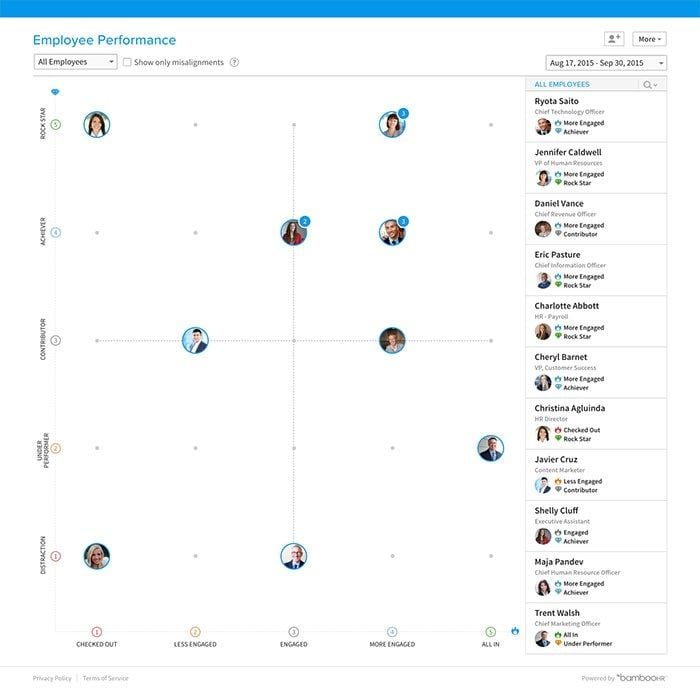
Key Features
- Employee performance monitoring: View employee workstations in real-time to see who is actively using work-related programs, how many emails are sent or phone calls are made, and other performance metrics
- Remote access: Check in with non-desk, field, and remote employees throughout the day to monitor their work with mobile apps and employee self-service portals
- Time and attendance recording: Record daily and hourly employee contributions on projects
- Employee analytics: Measure specific employee behaviors and track the results of their work in real-time and over a set work period
- Interactive communication channels: Build clear lines of communication from managers to employees through email and phone interactions; send alerts and notifications to remote employees to keep them working when away from the office
- Employee reward and discipline programs: Establish a recognition system for employees who perform well and create a structure for handling employees who are struggling or not contributing to the bottom line
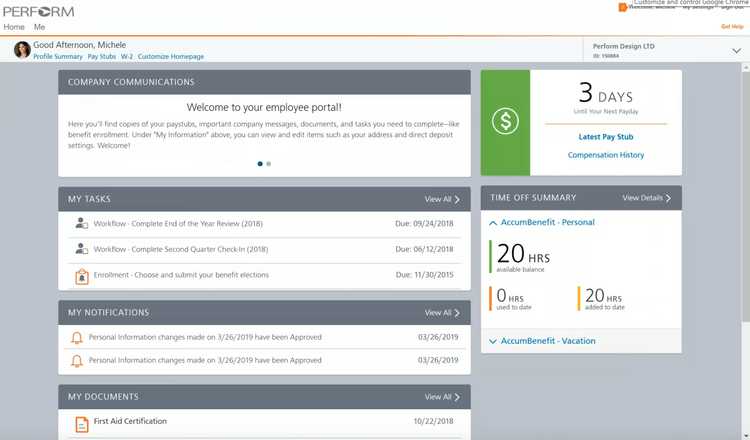
Primary Benefits
Implementing an employee management system can bring many improvements to your company:
Streamlined Business Decisions
Assigning the right workers to each task can significantly impact project success. If you’re a small business, you can’t afford to overload competent employees with too many projects while leaving other workers with empty plates. An employee management solution can streamline the decisions of line managers by using employee data to indicate which employees are available and capable of providing more work.
For example, say you have an upcoming project requiring lots of work. You can review individual performance metrics using employee management tools to see which workers have the highest success rate on similar projects. Then, compare with their real-time workload to see if they can take on additional labor.
Better Employee Incentives
One way to improve employee performance is to offer the right incentives. What works better, honey or vinegar? Some people respond better to regard; others need to know the consequences of failure. With employee management software, there are tools to set up incentive programs for your workers.
Set a clear protocol for what happens when someone misses a project deadline, and let everyone know what rewards they can enjoy when their work boosts the company’s bottom line. Offering the right rewards can significantly increase employee engagement, leading to higher-quality work.
Additionally, you can use performance management tools to collect employee information for quarterly or annual performance reviews.
Review Remote Worker Performance
When employees work from home, it can be hard to measure their performance compared to those in the office. Management software lets you monitor non-desk workers, field agents, and anyone working outside the office.
Mobile-friendly applications let these remote workers clock in with the main office to let managers know their progress on assignments. There are also basic time tracking tools to indicate who is clocked in at any given time, no matter their physical location. This system can be permanently installed for field workers or modified for temporary stay-at-home assignments.
Customizable Employee Scheduling
If your business has a mixture of in-office and non-desk workers, you’ll need a customizable scheduling timesheet to keep track of when and where everyone is working. Workforce management systems let business owners arrange calendar templates days, weeks, or months in advance.
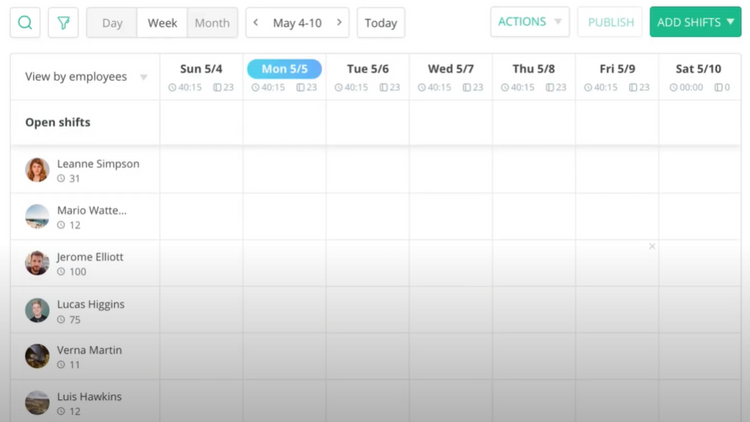
Onboarding New Talent and Offboarding the Old
When your company needs new talent, bring in the best. Employee management and HR software offer solutions for expanding your talent pool. Applicant tracking tools help you automate the hiring process by finding suitable candidates to interview and avoiding those who will waste your time.
Next, streamline your HR processes once you’ve hired a new worker. With a user-friendly employee onboarding process and benefits administration, you can increase retention rates on new hires. Employee management software provides monitoring tools for this.
At the end of the employee lifecycle, handling offboarding with the same software makes the process more efficient. There are also tools for leave management when employees need temporary or long-term PTO.
How is Employee Management Different from Human Resources?
Employee management is sometimes lumped in with human resource systems. Both can offer onboarding tools, applicant tracking, and other hiring applications. Yet, there are several distinct differences between employee management and human resources. Some larger HR solutions may include employee management systems, though this may depend on the business’s scope and the company’s size.
HR services like human capital management help the company acquire talent by hiring new employees, keeping current staff by offering benefits, and providing conflict resolution during interpersonal disagreements. These services may also include applicant tracking systems for recruiting new talent.
By contrast, employee management focuses more on the day-to-day operations of a business through individual employee performance. Employee management tools may fall into the domain of HR staff, though the software is far more useful in the hands of managers and supervisors.
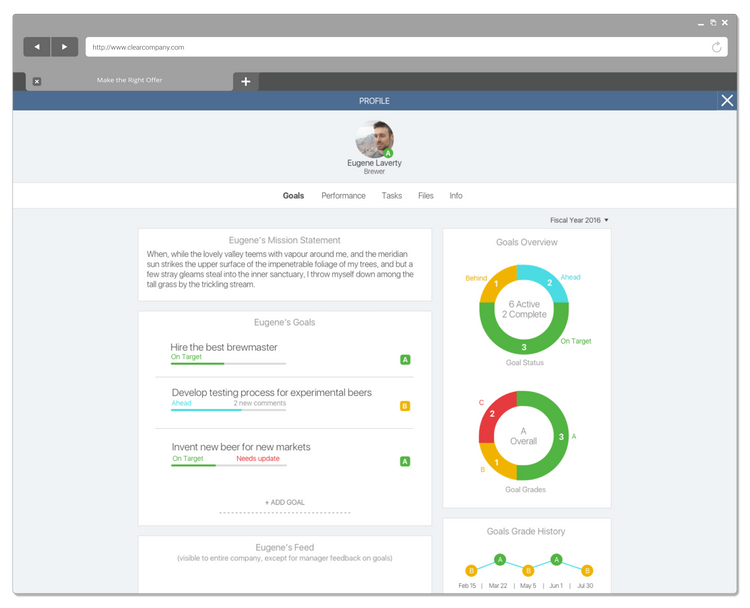
Pricing Guide
Most employee management software pricing is based on how many employees your company needs to manage. Some more affordable SaaS options begin at around $5 per user monthly. Larger products for enterprise-level corporations can be $60 per user per month. Fortunately, there is HR management software available for every budget.














































